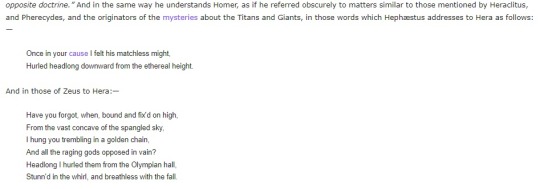#origen
Text
Eso de amar sin esperar nada a cambio es bonito en los cuentos de hadas. Pero en la vida real, un amor maduro exige un delicado equilibrio entre dar y recibir, porque todo aquello que no es mutuo, resulta ser tóxico.
Bert Hellinger
#editions#frases#notas#citas#bert hellinger#constelaciones#familiares#historia#familia#origen#mito#amor#romance#drama#reflexiones#autoayuda#conocimiento#textos#español#writings#post#realidad#verdad#relaciones#sociedad#vida#sentimientos#pensamientos#quotes#diario
2K notes
·
View notes
Text

A strong rumour says that the director of the next 𝗝𝗮𝗺𝗲𝘀 𝗕𝗼𝗻𝗱 film would be 𝗖𝗵𝗿𝗶𝘀𝘁𝗼𝗽𝗵𝗲𝗿 𝗡𝗼𝗹𝗮𝗻 😮
If so, we already know who would be in the film: 𝗧𝗼𝗺 as 007 and 𝗖𝗶𝗹𝗹𝗶𝗮𝗻 𝗠𝘂𝗿𝗽𝗵𝘆 as a possible villain, because this director repeats a lot of actors in his films, as you can see in the collage, and their names were rumoured 😏 I'm loving this idea so much 😍 I hope it comes true 🙏🏻💓
Opinions?
⠀⠀⠀⠀
Un fuerte rumor dice que el director de la próxima película de 𝗝𝗮𝗺𝗲𝘀 𝗕𝗼𝗻𝗱 sería 𝗖𝗵𝗿𝗶𝘀𝘁𝗼𝗽𝗵𝗲𝗿 𝗡𝗼𝗹𝗮𝗻 😮
De ser así, ya sabemos quiénes estarían en la película: 𝗧𝗼𝗺 como 007 y 𝗖𝗶𝗹𝗹𝗶𝗮𝗻 𝗠𝘂𝗿𝗽𝗵𝘆 como posible villano, porque este director repite mucho de actores en sus películas, como podéis ver en el collage, y se rumoreaban sus nombres 😏 Me está encantando tanto esta idea 😍 Ojalá se cumpla 🙏🏻💓
¿Opiniones?
⠀⠀
#tom hardy#edward thomas hardy#cillian murphy#inception#origen#eames#the dark knight rises#la leyenda renace#batman#batman trilogy#dunkirk#dunkerque#peaky blinders#alfie solomons#tommy shelby#my edits#mis edits#christopher nolan#james bond#007
129 notes
·
View notes
Photo

“Glory to God the eternal, age after age. Amen.”
~Origen, 184-253 AD
(Art: Ascension of Jesus by Gustav Dore, 1879)
550 notes
·
View notes
Text
Geological and Historical Evidence for Jesus’ Crucifixion Account

At Jesus’ crucifixion, Matthew (27:45-54) reported “From noon until three in the afternoon darkness came over all the land. About three in the afternoon Jesus cried out in a loud voice ‘My God, my God, why have you forsaken me?’ (cf., Psalm 22)…And when Jesus had cried out again in a loud voice, he gave up his spirit. At that moment, the curtain of the temple was torn in two from top to bottom. The earth shook, the rocks split and the tombs broke open. The bodies of many holy people who had died were raised to life. They came out of the tombs after Jesus’ resurrection and went into the holy city and appeared to many people. When the centurion and those with him who were guarding Jesus saw the earthquake and all that happened, they were terrified, and exclaimed, ‘Surely he was the son of God!’”
Matthew’s passage includes two events that can be historically and geologically confirmed: (1) Darkness covered the land for three hours (c.f., Matthew 27:45; Mark 15:33; Luke 23:44-45) and (2) An earthquake occurred.
“At that same moment about noontide, the day was withdrawn; and they, who knew not that this was foretold concerning Christ, thought it was an eclipse. But this you have in your archives; you can read it there. Yet nailed upon the cross, Christ exhibited many notable signs, by which his death was distinguished from all others. At his own free-will, he with a word dismissed from him his spirit, anticipating the executioners’ work. In the same hour, too, the light of day was withdrawn, when the sun at the very time was in his meridian blaze. Those who were not aware that this had been predicted about Christ, no doubt thought it was an eclipse.”
- Tertullian (197 AD), Jewish Consul
“In the 4th year of the 202nd Olympiad, there was a great eclipse of the sun, greater than had ever been known before, for at the 6th hour the day was changed into night and the stars were seen in the heavens. An earthquake occurred in Bythinia and overthrew a great part of the city of Nicaea.”
- Phlegon (2nd century AD) Greek historian, “Olympiads”
“With regard to the eclipse in the time of Tiberius Caesar, in whose reign Jesus appears to have been crucified, and the great earthquakes which then took place, Phlegon too I think has written in the 13th or 14th book of his Chronicles…Celsus imagines also that both the earthquake and darkness were an invention, but regarding these, we have in the preceding pages made our defense, according to our ability, adducing the testimony of Phlegon, who relates that these events took place at the time when our Savior suffered.”
- Origen (184 – 253 AD), Greek scholar and early Christian father who confirmed Phlegon’s writings
“Jesus Christ underwent his passion in the 18th year of Tiberius [33 AD]. Also at that time in another Greek compendium we find an event recorded in these words: ‘the sun was eclipsed, Bithynia was struck by an earthquake, and in the city of Nicaea many buildings fell.”
- Eusebius (315 AD), Historian of the Emperor Constantine.
What Caused the Three-hour Period of Darkness?
Before determining that the three-hour period of darkness is due to supernatural causes, we must rule out the natural possibilities. We have experienced natural events that have caused darkness during the daylight hours. These include when volcanoes erupt and emit dark clouds and when storms occur and cover the sky with clouds. Yet no Biblical or secular sources indicate any support for a volcanic explosion or storms, so we can rule out those two natural events.
What about an eclipse? The positioning of the sun and moon is required to answer this question. We have much support for the dating of Jesus’ crucifixion on Friday the 14th of Nissan in the year 33 (April 3, 33). This date was further predicted in the book of Daniel (9). Passovers only occurred during a full moon, so an eclipse would not have been possible due to the moon’s location on the far side of the earth away from the sun. Even if the positioning were conducive to an eclipse, eclipses only darken the earth for short moments, not for three hours, so we have another reason to rule out that natural option.
Is the Best Explanation to Explain this Event a Supernatural Explanation?
I will let readers answer that question for themselves.
Geological Support for the Earthquake

Scholars have reported that devastating earthquakes occurred in Jerusalem during Christ’s death (Mallet, 1853; Rigg, 1941). This occurred in a region that includes the Dead Sea fault, which is a plate boundary that separates the Arabian plate and the Sinai sub-plate (Garfunkel, 1981). This fault has been active since the Miocene (Kagan, Stein, Agnon, & Neuman, 2011) and the fault is still active today (De Liso & Fidani, 2014). The fault extends from the Red Sea in the south to the Taurus Mountains in the north.

Kagan and colleagues (2011) analyzed seismites in the Holocene Dead Sea basin by constructing two age-depth chronological models based on atmospheric radiocarbon ages of short-lived organic debris with a Bayesian model. Seismites are sedimentary beds and structures, which are deformed by seismic shaking. The scholars analyzed seismites in different areas of the basin, finding that several synchronous seismites appeared in all sections during particular years, including 33 AD (+/- 2 sigma; 95% confidence interval). Other years in which earthquakes occurred as evidenced by seismites are (AD unless otherwise noted): 1927, 1293, 1202/1212, 749, 551, 419, 33, 31 BC, and mid-century B.C.
After analyzing laminated sedimentary cores recovered at the shores of the Dead Sea, Migowski, Agnon, Bookman, Negendank, and Stein (2004) also confirmed an earthquake in 33 AD with a magnitude of 5.5. They documented earthquakes around 33 AD in 31 BC and 76 AD. The scholars analyzed seismites using radiocarbon dating.
Ben-Menahem (2014) conducted a literature review of empirical studies over 4,000 years of seismicity along the Dead Sea Rift. The scholar referenced the aforementioned studies along with one by Enzel, Kadan, and Eyal (2000) before concluding that earthquakes occurred in Masada in 31 BC, Jerusalem in 33 AD, and near Nablus in 64 AD.
In summary, the literature on seismicity along the Dead Sea basin supports the assertion that an earthquake occurred either in or very close to the year 33 AD.
We can pinpoint the date even closer – to April 3, 33. A United States government federal agency, the National Oceanic and Atmospheric Administration, has documented the major earthquakes throughout history. According to their website (NOAA.gov), in 33 AD, an earthquake occurred at the crucifixion of Jesus Christ in Bithynia and Palestine and Palestine, Jerusalem.
Conclusion
In summary, we have extensive extra-biblical support for the accounts of darkness and the earthquake during Jesus’ crucifixion. Taken together, these events support the historicity of the account of Jesus’ crucifixion.
source: abbreviated from https://christian-apologist.com/2019/01/05/geological-and-historical-evidence-for-jesus-crucifixion-account/
#church history#catholic#Christian#crucifixion#good friday#geology#origen#eusebius#tertullian#phlegon
268 notes
·
View notes
Text
Blotted out

Today’s Gospel is the parable about a wasteful steward, a bad manager. One who is about to get fired.
The manager’s big idea? Before he gets fired, he calls in the people who are in debt to his soon-to-be-former employer. And writes off their debts.
He makes sure they know that he’s the one who gave them a break. So they’ll be willing to help him out. When he shows up next week looking for a job.
Some worldly wisdom by the wasteful steward to be sure. But there’s some other worldly wisdom in this parable as well – and we see it in the people whose debts are written off.
None of them go back to the steward’s former employer and ask to have their debts reinstated. To a person they are all happy to take the gift they’ve been given.
And the steward’s former employer? He doesn’t try to have their debts reinstated. He never speaks of the debts again.
Why would he do that? Remember, this is a parable. Which means that there is a lot more going on here. For his part, Origen sees a beautiful image of God’s forgiveness in this.
Thinking of all the idiot things that you and I do to separate ourselves God, Origen says, “if you transgress, you write in yourselves the handwriting of sin…”
“When you have approached the cross of Christ and the grace of forgiveness, your handwriting is fastened to the cross and blotted out in the fountain of forgiveness.”
“Do not rewrite later what has been blotted out, or repair what has been destroyed.”
This is what happens in Reconciliation.
After God forgives us, He blots out the records of our wrongdoing and destroys the evidence.
After God forgives us, He doesn’t remind us of what we did. Or hold it against us.
After God forgives us, He never thinks about our sins again.
Something to remember, the next time you and I try to beat ourselves up over something that God has already forgiven.
Today’s Readings
#Forgiveness#God's Forgiveness#Blotted out#Reconciliation#God#Jesus#Catholic#Christian#Church#Origen#Moments Before Mass
26 notes
·
View notes
Text
11 notes
·
View notes
Text
Quote/s of the Day – 11 February – Apparition of the Immaculate Conception
Quote/s of the Day – 11 February – Apparition of the Immaculate Conception, the Blessed Virgin Mary at Lourdes
“I am the Immaculate Conception.”
Our Lady to St Bernadetteat Lourdes on 25 March 1858
This Virgin Motherof the Only Begotten of God,is called Mary,worthy of God,Immaculate of the Immaculate,One of the One.”
Origen (c 185-253)
“Come, then and search out Thy sheep,not through Thy…

View On WordPress
9 notes
·
View notes
Text

«Origen significa aquí aquello desde dónde y mediante qué una cosa es lo que es y cómo es. Lo que algo es, cómo es, lo designamos su esencia. El origen de algo es la procedencia de su esencia. La pregunta hacia el origen de la obra de arte, pregunta por la procedencia de su esencia. La obra surge, según la representación corriente, de y mediante la actividad del artista. Pero ¿mediante qué y desde dónde el artista es lo que él es? Mediante la obra, pues, que una obra honre a su maestro, significa: recién la obra hace advenir al artista como maestro del arte. El artista es el origen de la obra. La obra es el origen del artista. Ninguno es sin el otro. No obstante, ninguno de los dos (so)porta al otro. Artista y obra son, en cada caso, en sí y en su relación recíproca, mediante un tercero, que ciertamente es lo primero, a saber, mediante aquello, desde donde dónde artista y obra de arte tienen su nombre, mediante el arte.»
Martin Heidegger: El origen de la obra de arte. Departamento de Estudios Humanísticos, Universidad de Chile, pág. 1. Santiago de Chile, 1976.
TGO
@bocadosdefilosofia
@dias-de-la-ira-1
#heidegger#martin heidegger#el origen de la obra de arte#origen de la obra de arte#origen#esencia#obra de arte#obra#arte#artista#estética#metafísica#teo gómez otero#pere borrell del caso#huyendo de la crítica#tampantojo
12 notes
·
View notes
Text

Alejandra Pizarnik | Origen [frag.]
«La última inocencia» 1956.
3 notes
·
View notes
Text
1st Century AD 'Your Mum' Joke
Celcus (as quoted by Origen): If the mother of Jesus was beautiful, then the god whose nature is not to love a corruptible body, had intercourse with her because she was beautiful. It was improbable that the god would entertain a passion for her, because she was neither rich nor of royal rank, seeing no one, even of her neighbours, knew her. When hated by her husband, and turned out of doors, she was not saved by divine power, nor was her story believed. Such things, he says, have no connection with the kingdom of heaven.
Translation: G-d just liked your mum for her tits.
Source
Origen's rebuttal
#christianity#celcus#origen#early christianity#roasts#I love being a youth group leader sometimes#The rabbit holes are delicious
3 notes
·
View notes
Photo

Hey! Recall how I did open a single commission to help Boo out? Here it is, Origen for @skarmoree !
And she was honestly SO cute to draw!! In all honesty I don't know much of the character- From what I've gathered she's a half elf ranger and has just the prettiest curly hair and vitiligo, which I hadn't drawn before. As y'all know, I avoid using green on my drawings, so fitting that in this one was quite the challenge!
#elf#half elf#ranger#dnd#dungeons and dragons#elves#dnd art#vitiligo#dnd oc#original character#ttrpg#sygdomthings#syg2022#fantasy art#origen
159 notes
·
View notes
Text



Last night at the 96th 𝐎𝐬𝐜𝐚𝐫𝐬, they made a special mention of stunt doubles with a video compiling moments from several films, including 𝑴𝒂𝒅 𝑴𝒂𝒙: 𝑭𝒖𝒓𝒚 𝑹𝒐𝒂𝒅 ❤️🔥
So, I want to send special love to 𝗝𝗮𝗸𝗲 𝗧𝗼𝗺𝘂𝗿𝗶 for his great work as 𝗧𝗼𝗺's stunt double 💞
And I also want to congratulate 𝗖𝗶𝗹𝗹𝗶𝗮𝗻 𝗠𝘂𝗿𝗽𝗵𝘆, 𝗧𝗼𝗺's partner in several films, for his award for Best Actor, and 𝗖𝗵𝗿𝗶𝘀𝘁𝗼𝗽𝗵𝗲𝗿 𝗡𝗼𝗹𝗮𝗻, director of the films mentioned in the special collage, for his award for Best Director 👏🏻💯
⠀⠀⠀⠀
Anoche en los premios 𝐎𝐬𝐜𝐚𝐫 hicieron una mención especial a los dobles de acción con un vídeo recopilando momentos de varias películas, entre ellas 𝑴𝒂𝒅 𝑴𝒂𝒙: 𝑭𝒖𝒓𝒊𝒂 𝒆𝒏 𝒍𝒂 𝑪𝒂𝒓𝒓𝒆𝒕𝒆𝒓𝒂 ❤️🔥
Asi que, quiero mandarle especial cariño a 𝗝𝗮𝗸𝗲 𝗧𝗼𝗺𝘂𝗿𝗶 por su gran trabajo como doble de acción de 𝗧𝗼𝗺 💞
Y también quiero felicitar a 𝗖𝗶𝗹𝗹𝗶𝗮𝗻 𝗠𝘂𝗿𝗽𝗵𝘆, compañero de 𝗧𝗼𝗺 en varias películas, por su premio a Mejor Actor, y a 𝗖𝗵𝗿𝗶𝘀𝘁𝗼𝗽𝗵𝗲𝗿 𝗡𝗼𝗹𝗮𝗻, director de las películas mencionadas en el collage especial, por su premio a Mejor Director 👏🏻💯
⠀⠀
#tom hardy#edward thomas hardy#cillian murphy#christopher nolan#inception#origen#the dark knight rises#la leyenda renace#dunkirk#dunkerque#peaky blinders#oscars#2024 Oscars#oscars 2024#academy awards#premios oscar#behind the scenes#mad max#jake tomuri#jacob tomuri#mad max furia en la carretera#mad max fury road#max rockatansky#my edits#mis edits#2014
23 notes
·
View notes
Text
I have located an early Christian discourse in which Satan is explicitly linked to the Titans, possibly to Typhon by extension. Both the Christian Origen of Alexandria and the pagan Celsus agree on the myth of the Titanomachy as the basis of the myth of the Fall of Satan.
Celsus, as quoted by Origen, accused Christians of impiety by posing an adversary to God - that being The Devil, or rather Satan. Celsus argued that Christianity poses a God that desires to do good but is helpless to do it because he has someone (Satan) counterveiling his will. Then, Celsus discusses ancient mythology concerning war among the gods. He focuses specifically on a myth told by Pherecydes of Syros, in which in the gods Kronos and Ophioneus raise their armies against each other in a battle to determine who will rule the cosmos.
At this point we need to step back a bit. Ophioneus, or Ophion, is the name of a serpent deity who seems to represent the forces of chaos. In some myths, Ophioneus is presented as the first divine ruler of the cosmos, though Pherecydes doesn't agree with that. As for Kronos, it is possible that in Pherecydes' myth this refers to both the Titan Kronos and Chronos the personification of time. The two figures are not traditionally conflated with each other, but it seems that Pherecydes probably did interpret them as being the same deity. In Pherecydes' myth, Kronos and Ophioneus battle each other before the ordering of the cosmos begins, though the full account of this battle is not entirely clear. Celsus believed that the loser of this battle, Ophion, was cast into the ocean (or rather Oceanus).
Some fragments seem to support the notion that it is Oceanus rather than Tartarus that Ophion is cast down into. But Ophioneus seems to also be considered identical or parallel to Typhon, who, in Greek mythology, was cast down into Tartarus or under Etna after his defeat by Zeus. It is possible that Ophion may have been thought to be born in Tartarus, which Pherecydes depicts as a cave below the earth, whereas Typhon was also born in a cave as the son of Gaia (earth) and Tartaros.
One thing to note is that, for Pherecydes, unlike many other ancient cosmogonies, it seems there is no primordial chaos that precedes an act of primeval demiurgy resulting in cosmic order. Instead, the forces of order and chaos existed besides each other forever and in conflict. For Pherecydes there was also no creation out of nothing. Instead, three gods were the first to exist all along: Zas (Zeus), Chthonie (Ge/Gaia), and Kronos/Chronos. He believed that these gods existed eternally, and that Chaos somehow came to be with no explanation.
Anyway, Celsus brings up Pherecydes' myth while discussing the concept of Satan, and then says that the Greek myths concerning the Titans and/or the Giants, and the Egyptian myths concerning Typhon (obviously meaning Set in this context) shared a similar symbolic meaning. He also relates that Hepheastus told Hera that he once felt the might of Zeus and hurled down from Olympus, and that Zeus boasted to Hera of how he bound and hung her in golden chains and hurled all the gods who opposed him from Olympus, as if to relate these to the Fall.

Celsus then does something interesting: he identifies the words of Zeus to Hera with the word of God to matter, arguing that this signifies matter that was originally was in discord before God then took and bound it together and arranged it with law, and then banished disorder. Demons who create disorder in the cosmos are related in Celsus' analogy to Titans and rebelling gods: they are chastised and hurled down. Tartarus, according to both Celsus and Pherecydes, is the place where Zeus banishes disorderly or insolent gods: in a word, prison.
Origen seems to actually agree with this analogy. In fact, in Book 4 of Against Celsus, Origen referred to "earthly demons, who delight in frankincense, and blood, and in the exhalations of sacrificial odours, and who, like the fabled Titans or Giants, drag down men from thoughts of God". Moreover, Origen argued that the writings of Moses mentioned a "wicked one" and his "falling from heaven" before the time of Homer and Pherecydes. Origen believed that Satan was the serpent that tempted Adam and Eve and that this was the original myth behind Ophioneus. If Origen interprets Satan as Ophioneus, then I would argue that he implies this connection for Typhon, and the Titans and Giants in relation to his demonic host. Origen also says that Satan is the "destroying angel" and the scapegoat Azazel.
This is interesting to consider in light of Plutarch and other sources whereby Typhon Seth is represented as a sacrificial animal. For Plutarch, Typhon is destined to never be completely defeated, and his power resides in the sacrificed animals and their slain blood, which, for Plutarch, ultimately nourishes the cosmos at least in the act of sacrifice, which pleases the powers of Osiris and Isis.
In any case, Origen seems to agree with Celsus on the Titanic-Satanic analogy, with the difference being that Celsus thinks the Christians were simply imitating pre-Christian myths while Origen thinks the Christian narrative preceded those same myths.
It might be worth noting that 2 Peter 2:4 says that God did not spare the angels who "sinned" against him, and that he threw them into "the pit". This is sometimes rendered as "hell", but in the Greek New Testament "the pit" is translated as Tartarus. Yes, none other than Tartarus, the prison of the Titans, and perhaps of Typhon and Kronos. From the pagan (or at least Celsian) standpoint at least, the parallels could not be clearer than this.
#satan#typhon#seth typhon#celsus#origen#greek mythology#titanomachy#titans#pherecydes#ophion#ophioneus#serpents#paganism#roman polytheism#tartarus#the fall#the fall of satan
5 notes
·
View notes
Text
No te quiero débil,
llorando por los rincones,
¡Te quiero fuerte!
No te quiero tan princesa,
de esas que no mueven ni un dedo,
pendientes sólo del manicure,
encerrada en tu castillo,
¡Te quiero mujer!
Valiente,
que dia a dia sale a partirse la madre,
¡Que sufre si!
Que lleva dolor,
pero con mucho coraje lo esconde tras una sonrisa.
No te quiero amargada,
quejandote todo el día,
¡Te quiero feliz!
Luchando contra la adversidad,
positiva,
construyendo con tus manos tu propio palacio,
¡Digna!
Una dama.
No te quiero presa,
callada,
sumisa,
¡Te quiero libre!
Diciendo lo que sientes,
gritando para que te oigan,
¡Te prefiero loca!
Riendote de la vida,
bailando con ella,
¡Que se entere quién eres!
No te quiero reina,
¡Eso ya lo eres!
¡Te quiero bruja!
Ruda,
peleando por tus sueños,
asustando al mundo al verte volar,
¡Con alas o sin alas!
Pero siempre decidida,
dispuesta a pelear por lo que es tuyo.
Tomando el timón de tu barco,
aunque no sepas navegar,
¡Asi te quiero!
Pura maldad ❄️
#citas#notas#frases#escritos#fragmentos adolescentes#amor#pensamientos#valentia#sentimientos#libertad#origen#ritmo#vida#decisiones#pura maldad
96 notes
·
View notes
Text
Blotted out
Today’s Gospel is the parable about a wasteful steward, a bad manager. One who is about to get fired.
The manager’s big idea? Before he gets fired, he calls in the people who are in debt to his soon-to-be-former employer. And writes off their debts.
He makes sure they know that he’s the one who gave them a break. So they’ll be willing to help him out. When he shows up next week looking for a job.
Some worldly wisdom by the wasteful steward to be sure. But there’s some other worldly wisdom in this parable as well – and we see it in the people whose debts are written off.
None of them go back to the steward’s former employer and ask to have their debts reinstated. To a person they are all happy to take the gift they’ve been given.
And the steward’s former employer? He doesn’t try to have their debts reinstated. He never speaks of the debts again.
Why would he do that? Remember, this is a parable. Which means that there is a lot more going on in here. For his part, Origen sees a beautiful image of God’s forgiveness in this.
Thinking of all the idiot things that you and I do to separate ourselves God, Origen says, “if you transgress, you write in yourselves the handwriting of sin…”
“When you have approached the cross of Christ and the grace of forgiveness, your handwriting is fastened to the cross and blotted out in the fountain of forgiveness.”
“Do not rewrite later what has been blotted out, or repair what has been destroyed.”
This is what happens in Reconciliation.
After God forgives us, He blots out the records of our wrongdoing and destroys the evidence.
After God forgives us, He doesn’t remind us of what we did. Or hold it against us.
After God forgives us, He never thinks about our sins again.
Something to remember, the next time you and I try to beat ourselves up over something that God has already forgiven.
Today’s Readings
#Forgiven#God's Forgiveness#God#Jesus#Catholic#Christian#Church#Blotted out#Origen#Beating ourselves up#Forgiveness#Moments Before Mass
48 notes
·
View notes



